Finnmark – Norway’s northernmost and easternmost county – was my goal for the road trip this summer. I have never been as far north in my home country, and this summer, I visited the last two of Norway’s 18 Scenic routes: Havøysund and Varanger. The route to Havøysund runs parallel to Nordkapp/the North Cape, and Varanger runs from Varangerbotn to Hamningberg.
My first stop in Finnmark was Alta, where we visited two of the main attractions;
Northern Lights Cathedral and the Rock Art inscribed into UNESCO’s World Heritage List.
Some facts about FINNMARK:
- was a county in the northern part of Norway. On 1 January 2020, Finnmark was merged with the neighbouring county of Troms to form the new “Troms og Finnmark “county; however, it is scheduled to become a county again in 2024.
- By land, it bordered Troms county to the west, Finland (Lapland region) to the south, and Russia (Murmansk Oblast) to the east, and by water, the Norwegian Sea (Atlantic Ocean) to the northwest, and the Barents Sea (Arctic Ocean) to the north and northeast
ALTA – The City of northern light
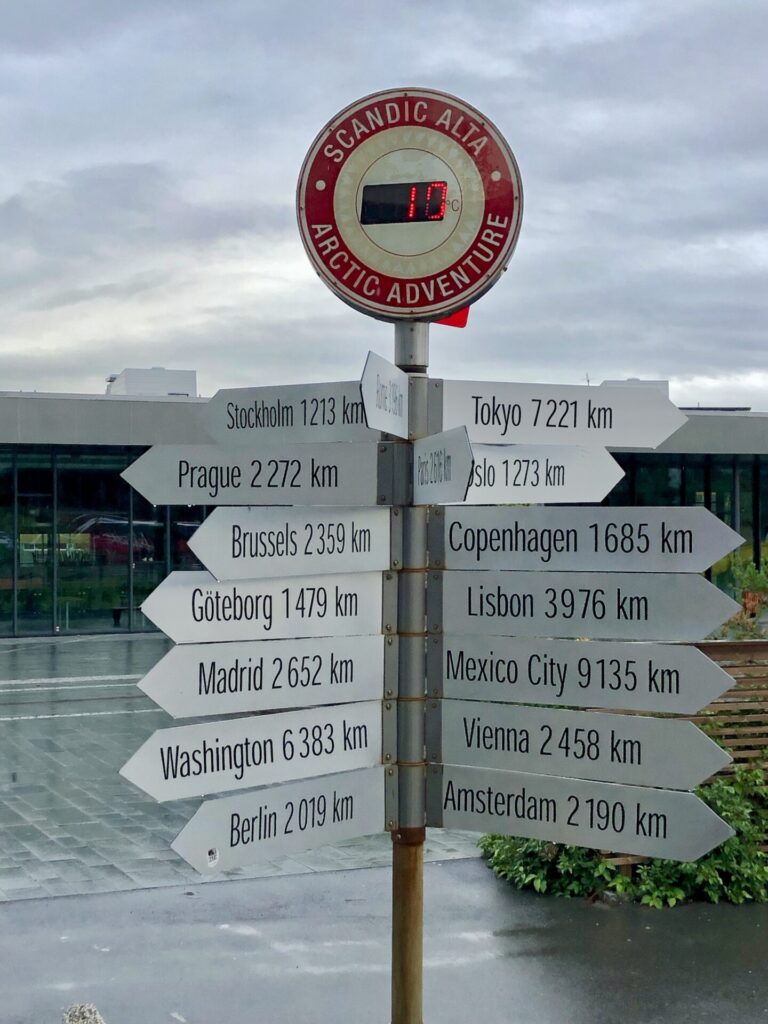
After a 5-6 hours drive from Tromsø, via Nordbotn, along the beautiful Lyngenfjord with Skibotn and Birtavarra, we reached Alta – the city of northern light.
Alta is the second northernmost city in the world and is mainly situated along the Altafjord, taking in large tract of woodlands, as well as parts of the High Plateau of Finnmarksvidda.
We stayed at the Scandic Hotel in the new centre with new commercial and residential buildings. This sign is placed right by the entrance of the hotel.
Northern Lights Cathedral – NORDLYSKATEDRALEN
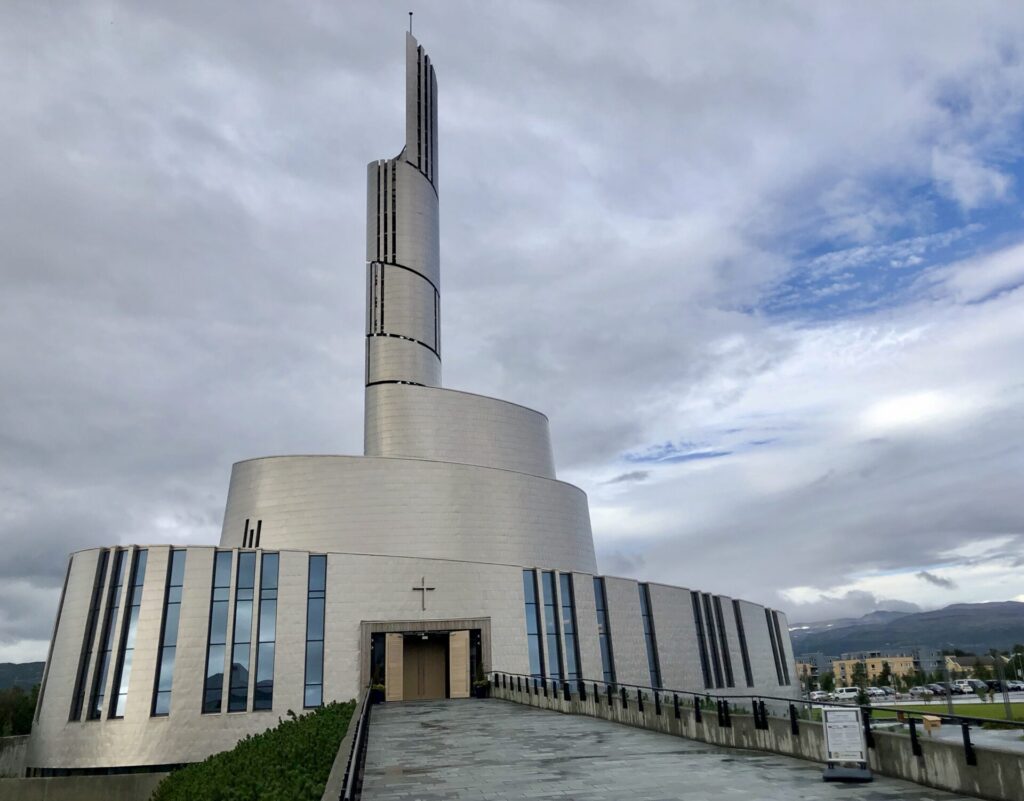
Directly opposite the hotel is the Northern Lights Cathedral – NORDLYSKATEDRALEN –
a landmark, tourist attraction and cultural arena!
The modern church was built in a circular style in 2013 using plans drawn up by the architectural firm LINK Arkitektur in collaboration with Schmidt Hammer Lassen Architects.
The building is constructed of concrete and wood with external cladding of titanium sheets.
The central feature is its large spiral with belfry. The interior contains artwork by Danish artist Peter Brandes.
The Northern Lights were the inspiration behind the design, and from every angle, you can see undulating waves resembling the Northern Lights.
Modern, different ..and stunning!
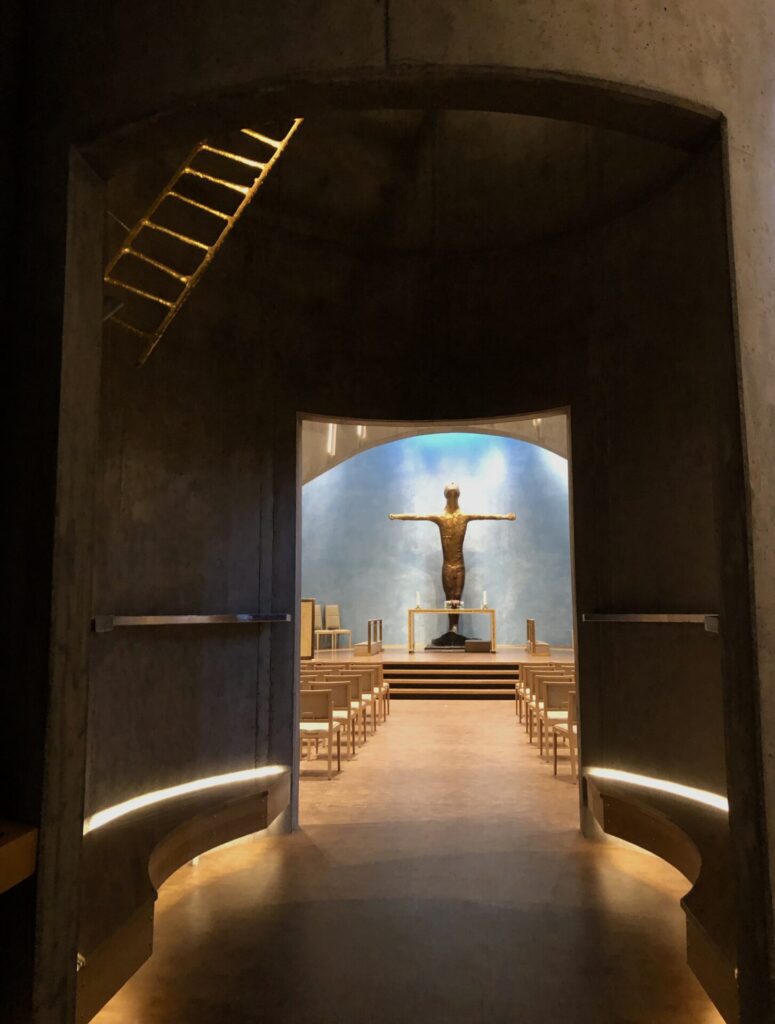
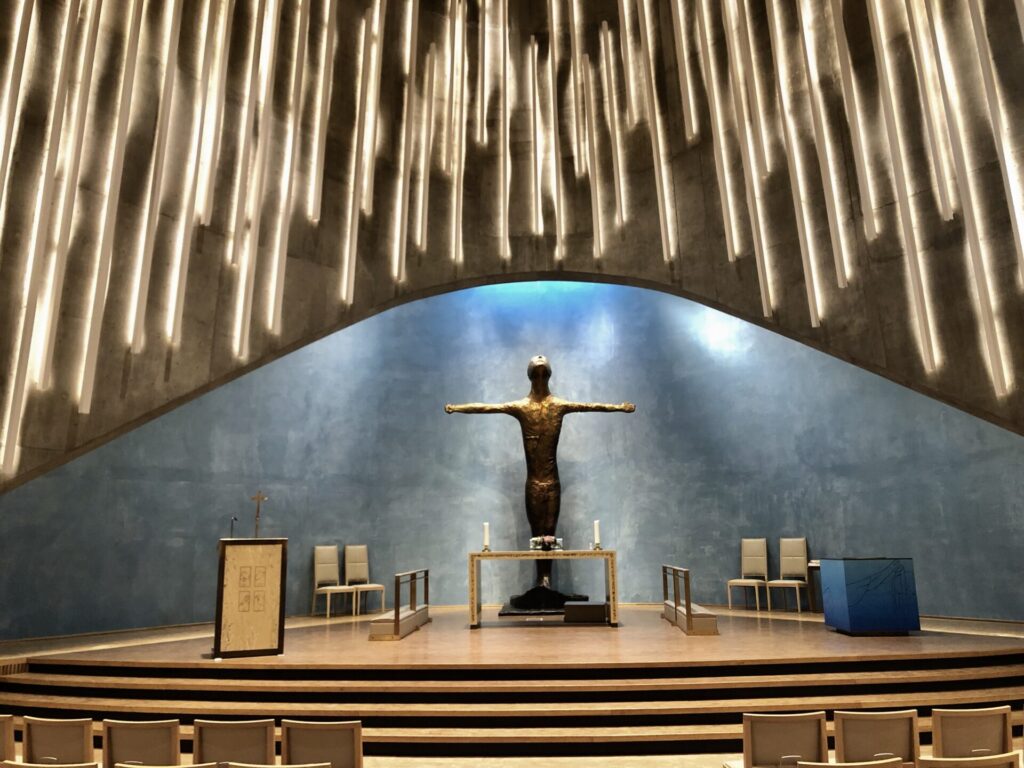
Another attraction in Alta is the famous rock carvings to the west of the town.
World Heritage Rock Art Centre – Alta Museum
In Alta you will find Northern Europe’s largest concentration of rock art made by hunter-gatherers. The Rock art comprises both rock carvings and rock paintings made from 7000 to 2000 years ago. The rock art in Alta was inscribed into UNESCO’s World Heritage List on 3 December 1985 as the only prehistoric monument in Norway. The World Heritage Site in Alta consists of 4 sites with rock carvings (Hjemmeluft, Kåfjord, Amtmannsnes and Storsteinen) and 1 with rock paintings (Transfarelv).
All of these sites are at the head of the Altafjord, and it is only 15 km as the crow flies between the westernmost and easternmost sites. When rock art was inscribed into the World Heritage List, the number of figures was estimated to be over 3000. Today that number has doubled by approx. 6000 registered figures. Of these, the rock paintings make up only ten panels, with altogether 50 figures. In other words, the main figures are rock carvings, and Hjemmeluft, where the World Heritage Rock Art Centre – Alta Museum is located, is the largest area.
We visited this site close to Alta Museum. Included in the entrance fee is a comprehensive booklet explaining the site. There are 2 boardwalk routes along the rock drawings, and we walked the shorter route where the most famous drawings can be found.
I have never seen so many different figures, here you will find people, reindeer, moose, bears, dogs/wolves, foxes, hares, geese, ducks, swans, cormorants, halibut, salmon, whales, boats, implements and other artefacts, and various geometric patterns and shapes..
This was impressive. The Alta rock art fascinates me. Go and have a watch yourself, you won´t be disappointed!
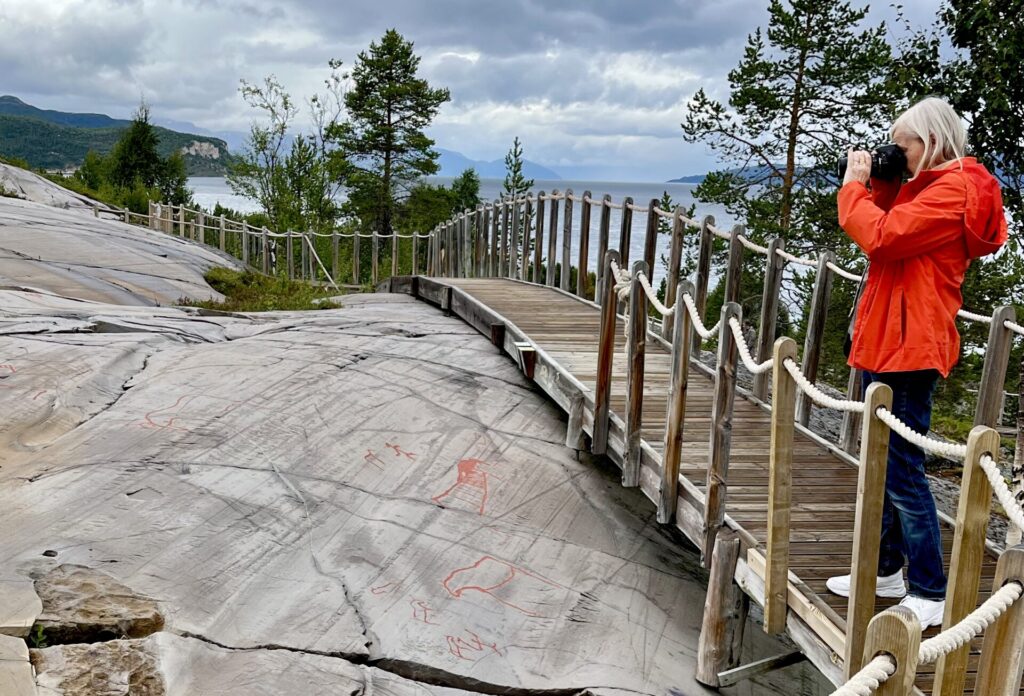
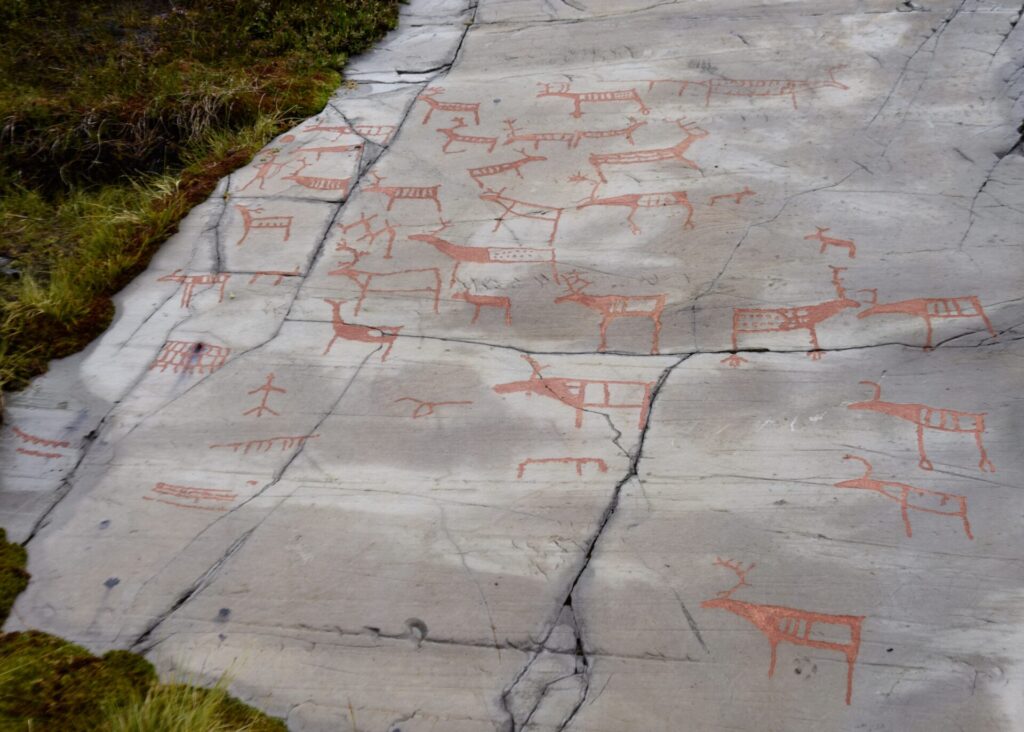
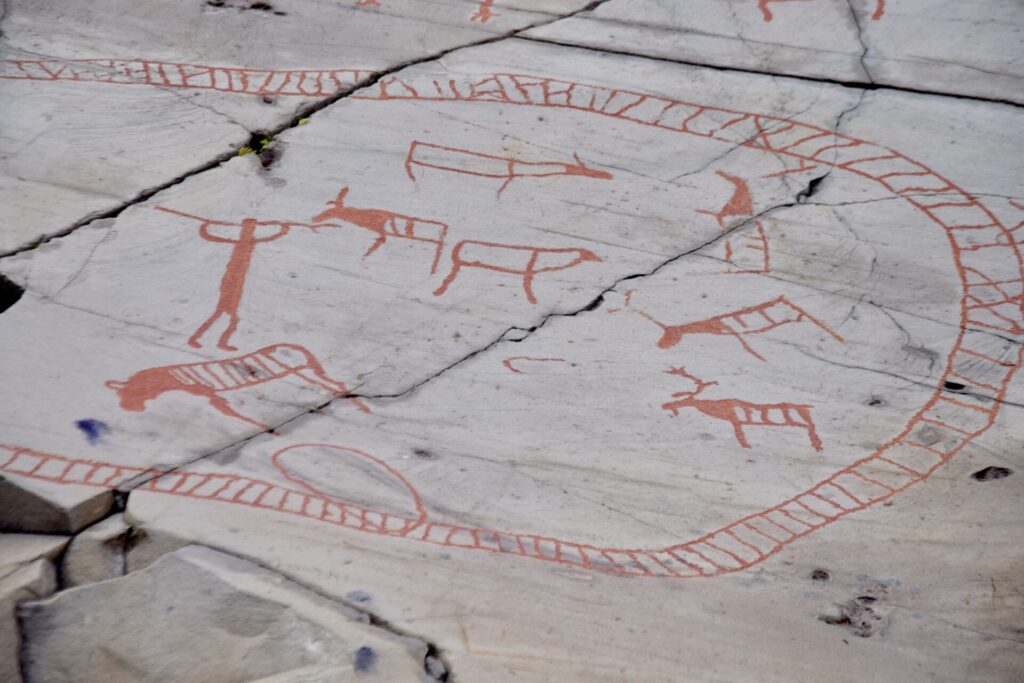
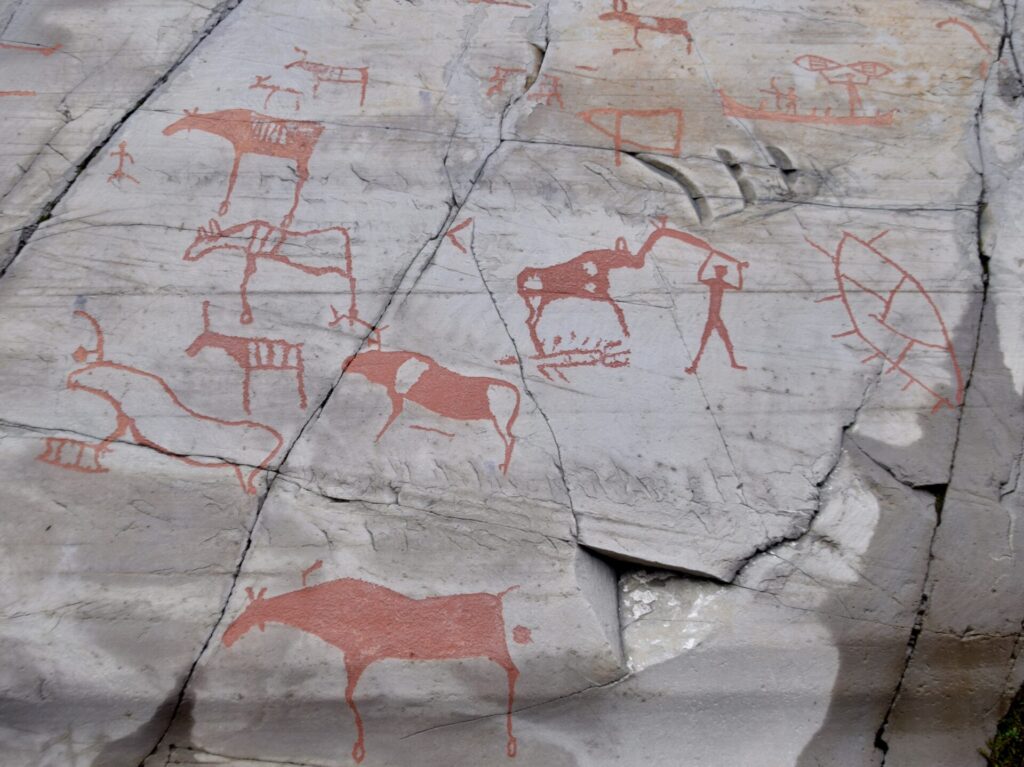

Alta Museum houses several exciting exhibitions about rock art, the Northern Lights, salmon fishing and much about our cultural heritage. Several temporary exhibitions of great interest to visitors and local guests are also set up.
The Rock art in ALTA:
- gives us a unique insight into people’s thoughts and rituals, social organisation, technology and use of resources.
- is diverse, sometimes with large scenes depicting people and animals in various activities, such as hunting, trapping and fishing, rituals and communication.
- gives us an insight into real-life events, myths and legends.
- were more likely made on the smooth rock surfaces at the water’s edge. As the land gradually rose and new rock surfaces appeared, the artists used these for their carvings.
The oldest scenes are, therefore, high above present sea levels, whilst the later ones are lower in the terrain.

